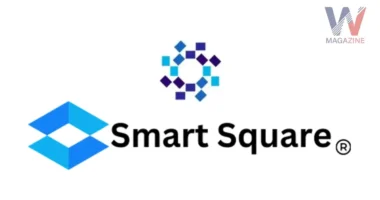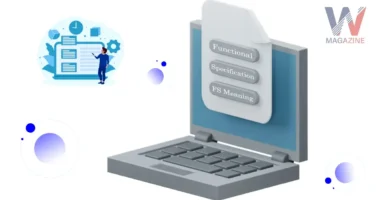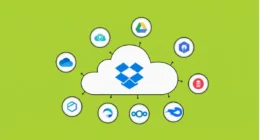Table of Contents
- What Is a Local Exchange Carrier (LEC)?
- LECs come in two main types
- The LEC serves two key purposes
- What Is an Interexchange Carrier (IXC)?
- Why the Distinction Exists?
- Core Differences at a Glance
- How Do They Work Together?
- Technical Details and Codes
- Why It Matters?
- Evolution and Modern Trends
- Real-World Examples
- Key Takeaway
- What You Should Know?
- Conclusion
If you’re wondering what separates a “local exchange carrier” from an “interexchange carrier,” you’re in the right place. This guide unpacks their roles, how they work together, and why they matter, using easy, everyday words.
What Is a Local Exchange Carrier (LEC)?
A local exchange carrier, commonly abbreviated LEC, is your neighborhood phone company. Think of it as the local connection provider; you pick up the phone, and the LEC routes your call, provides broadband, and connects you to the local network. They own and maintain the physical wires, switches, and infrastructure in your local area. In the U.S., these were once part of the old “Baby Bells” created after AT&T’s breakup in 1984.
LECs come in two main types
ILEC (Incumbent Local Exchange Carrier): These are the large, long-standing local providers, like AT&T and Verizon.
CLEC (Competitive Local Exchange Carrier): Newer companies that entered the local market, often by building their infrastructure or leasing it from ILECs.
The LEC serves two key purposes
Local connections, your calls within town are routed by the LEC. Linking to long-distance services, if you make a call outside your local area, the local exchange carrier (LEC) hands it off to a long-distance provider.
What Is an Interexchange Carrier (IXC)?
An interexchange carrier, also known as an IXC or long-distance carrier, is a company that handles calls beyond your local area, like between cities or states. IXCs are behind the scenes whenever you’re making long-distance voice calls, sending data across regions, or connecting internationally.
These carriers operate large, high-speed networks using fiber-optic cables, satellite links, digital systems, and softswitch technology to move voice, data, and video over long distances. Examples you might know include AT&T Long Distance, Verizon Long Distance, Sprint (now part of T-Mobile), MCI, and Lumen.
Why the Distinction Exists?
Back in 1982, AT&T was required by the government to divide its operations into regional local carriers, often called the Baby Bells (LECs), and separate long-distance service providers (IXCs). The idea was to promote fair competition and eliminate monopolies.
Then came the Telecommunications Act of 1996, breaking down barriers even further. It forced LECs to share network access with competitors (CLECs), and IXCs could now offer local services as well. This blurred the old lines, but legally, LECs and IXCs remain different categories today.
Core Differences at a Glance
| Feature | Local Exchange Carrier (LEC) | Interexchange Carrier (IXC) |
|---|---|---|
| Area Served | Within your local region/LATA | Between regions/states/countries |
| Network Infrastructure | Local wires, switches, DSL, fiber | Trunk lines, fiber backbone, satellites |
| Call Type | Local, local toll | Long-distance, inter-LATA |
| Examples | AT&T local, Verizon local, Frontier, Windstream | AT&T long-distance, Verizon long-distance, Sprint, Lumen |
| Regulation | Regulated by FCC/PUC; must share, allow porting | Regulated for inter-LATA connectivity, CIC/CAC codes |
How Do They Work Together?
Let’s walk through a typical phone call to see them in action:
- Local call: If you call your neighbor, your LEC connects you directly through its local network.
- Long-distance call: When you place a call to someone in a different state.
- Your phone sends the call over the LEC’s local switch.
- The LEC hands the call to an IXC at the point of interface (POI).
- The interexchange carrier (IXC) transfers the call across its long-distance network until it reaches the receiving local exchange carrier (LEC).
- The receiving LEC handles the final delivery to the recipient.
The IXC’s job is to transport the call between local networks; LECs take care of local delivery.

Technical Details and Codes
CIC (Carrier Identification Code): Every carrier, LEC, or IXC has a unique four-digit code. When making a long-distance call, you can use a CAC (101 + CIC) to override your default long-distance carrier.
LATA, or Local Access and Transport Area, sets the regional limits within which local calls are handled. Feel free to send more lines if you need help rewording them!
Why It Matters?
- For consumers: This setup affects how you’re billed: local calls from your LEC are separate fees from long-distance calls through an IXC. You also get the option to switch long-distance providers without touching your local phone service.
- For businesses: Understanding LEC vs IXC helps in managing telecom costs, negotiating service contracts, and setting up phone systems like PBX or VoIP.
- From a tech angle: LECs manage local switches, copper and fiber loops, while IXCs run the heavy-duty backbone links between cities and countries.
- Regulatory impact: Laws like the Telecom Act made networks more open, letting new players enter and compete, pushing better services and prices.
Evolution and Modern Trends
- Technology shift: Both LECs and IXCs are now using fiber, VoIP, and digital systems like softswitches.
- Convergence of services: Cable, wireless, and internet providers are entering both local and long-distance markets. Fixed distinctions are fading.
- Regulatory changes: Telecom rules are evolving; some obligations, like unbundling local loops, have lessened since the 1990s.
Real-World Examples
- AT&T: Operates both LEC and IXC segments, local phone service, and nationwide long-distance.
- Verizon: The same regional LEC and long-distance IXC.
- Sprint: Built as an IXC, now merged under T-Mobile.
- Frontier and Windstream: Smaller, mostly ILEC LECs serving rural areas.
Key Takeaway
A local exchange carrier (LEC) connects your home or office within your town using local wires and switches, while an interexchange carrier (IXC) connects those local networks across regions or countries. Both work together to make sure your call reaches anywhere in the world, and each plays a unique role in pricing, regulation, and technology.
What You Should Know?
Want to switch long-distance carriers? Use your CIC with 101 + CIC. Setting up phone systems? Know whether you need LEC for local lines and IXC for long-distance trunks.
You may need to manage agreements with both LECs and IXCs. On your phone bill? Look for separate charges: local service (LEC) vs. long-distance or toll fees (IXC).
Conclusion
Understanding the difference between a Local Exchange Carrier (LEC) and an Interexchange Carrier (IXC) helps demystify how calls and data move across networks. LECs handle local connections within your area, while IXCs bridge the gap between regions and countries. Together, they ensure seamless communication, influence billing, and affect how businesses and consumers manage telecom services in an evolving digital landscape.









